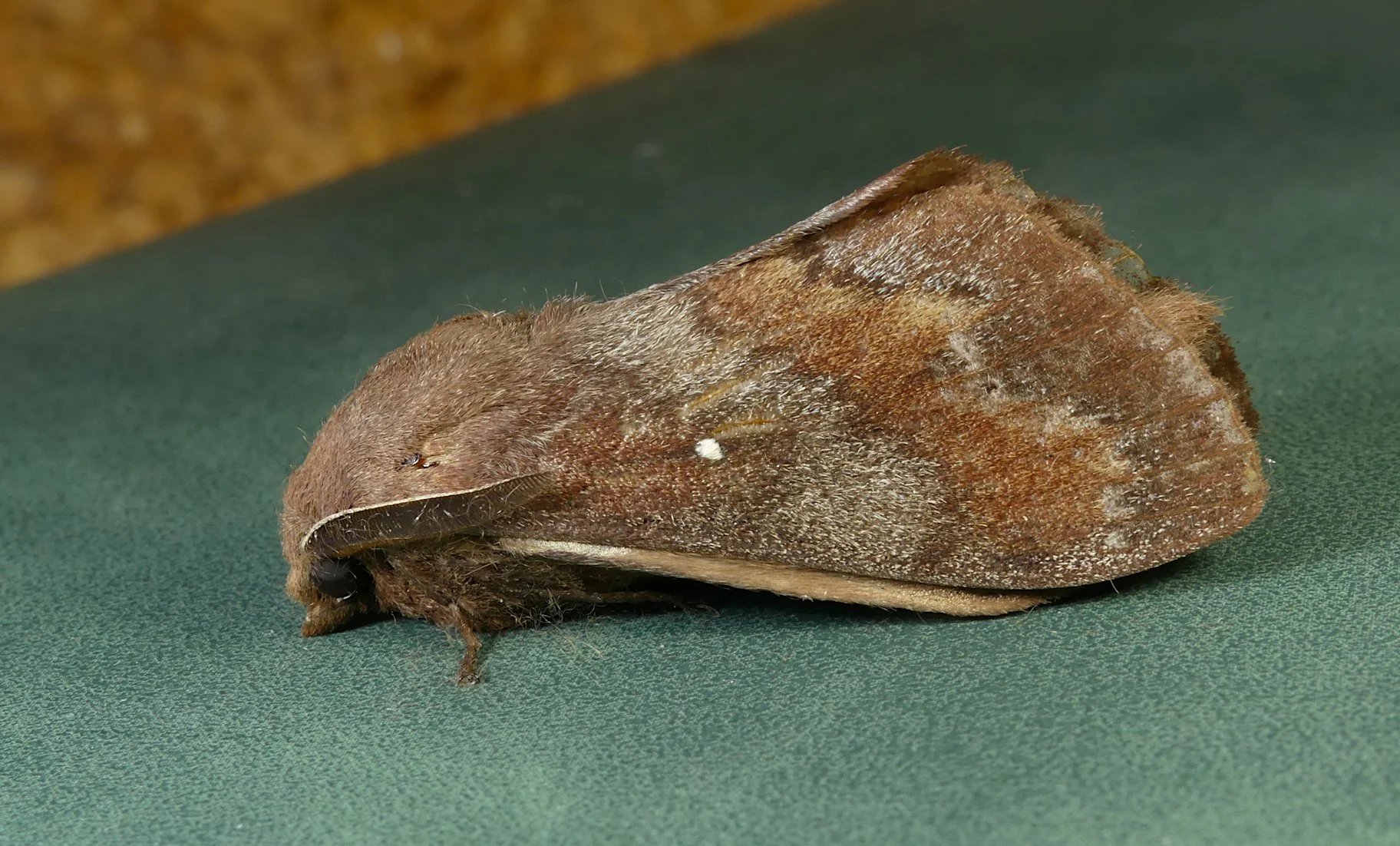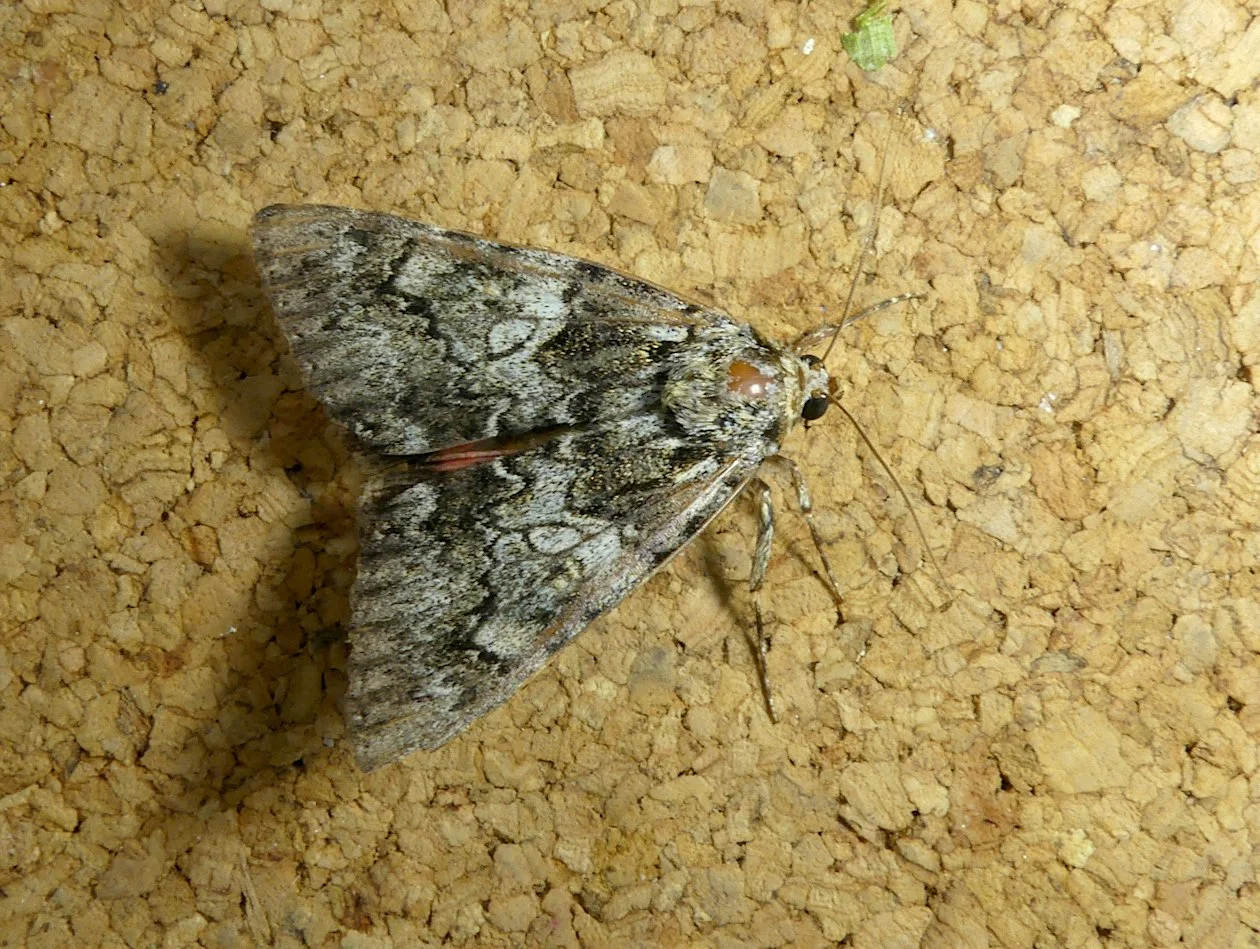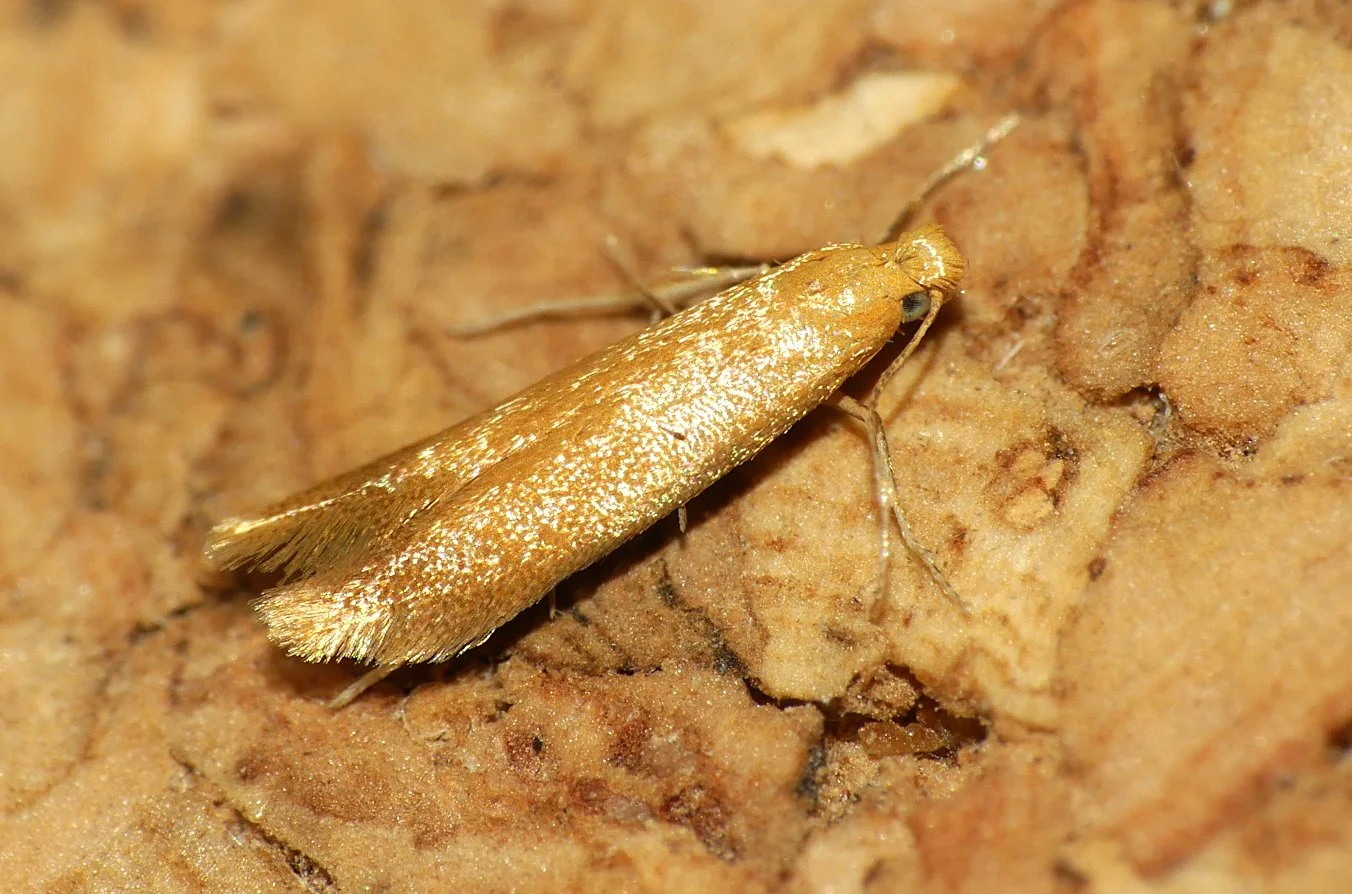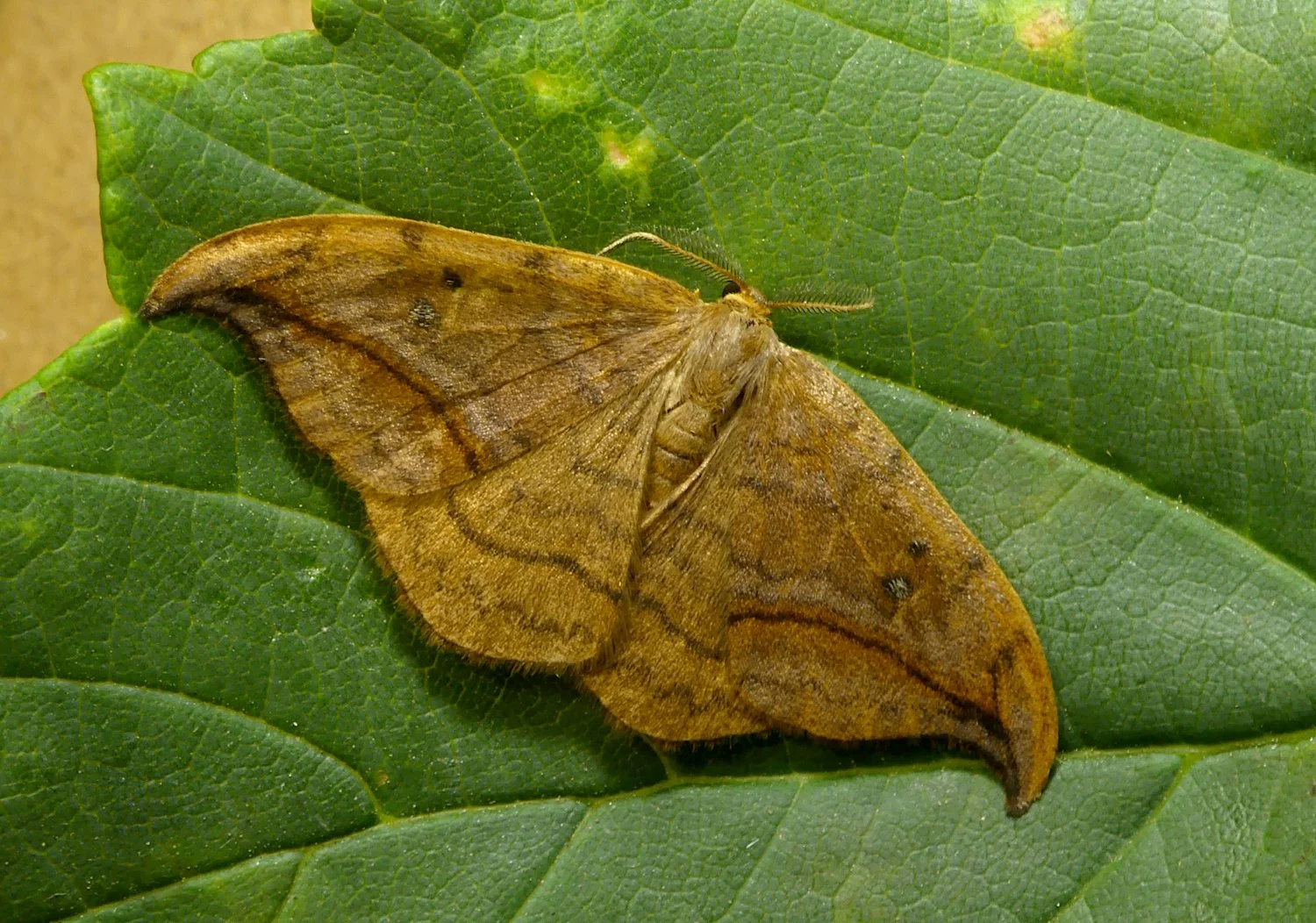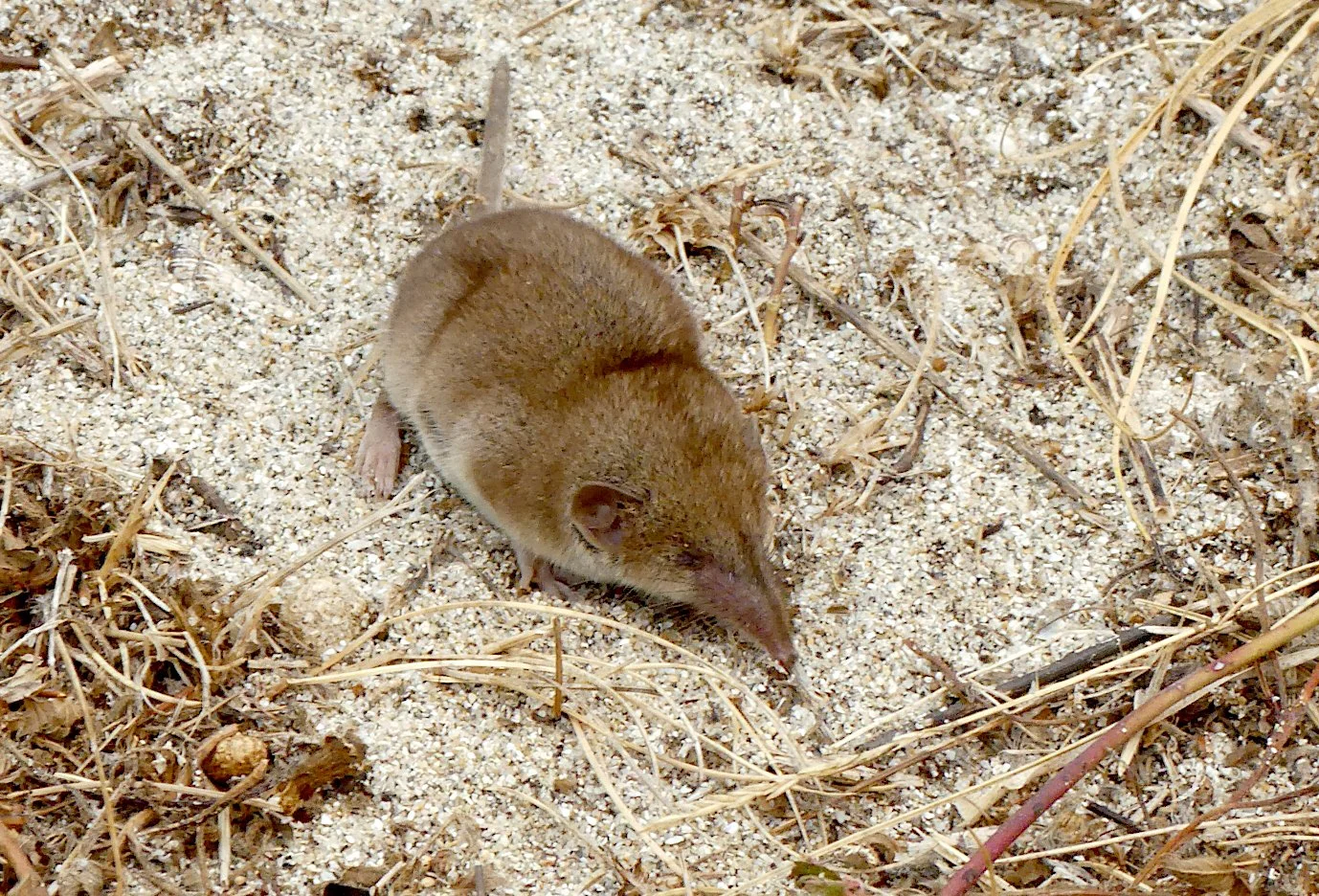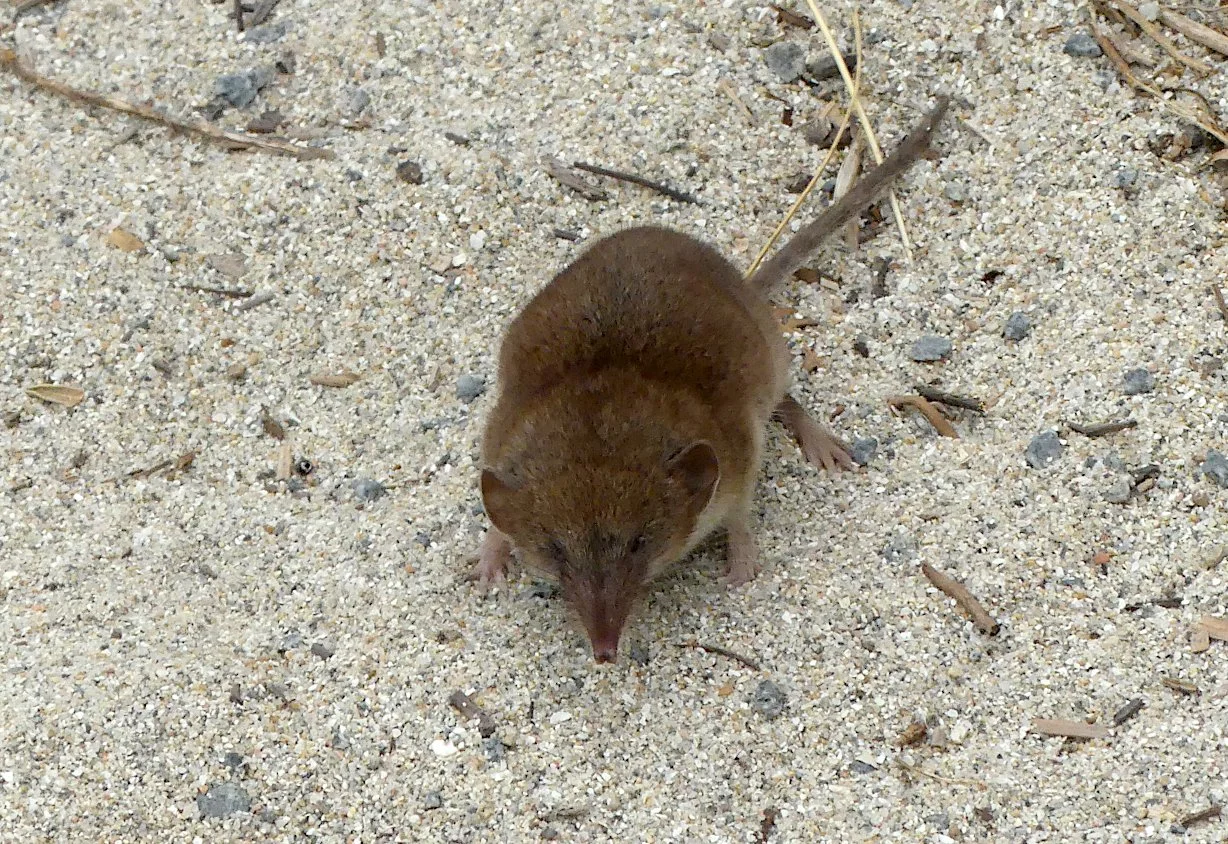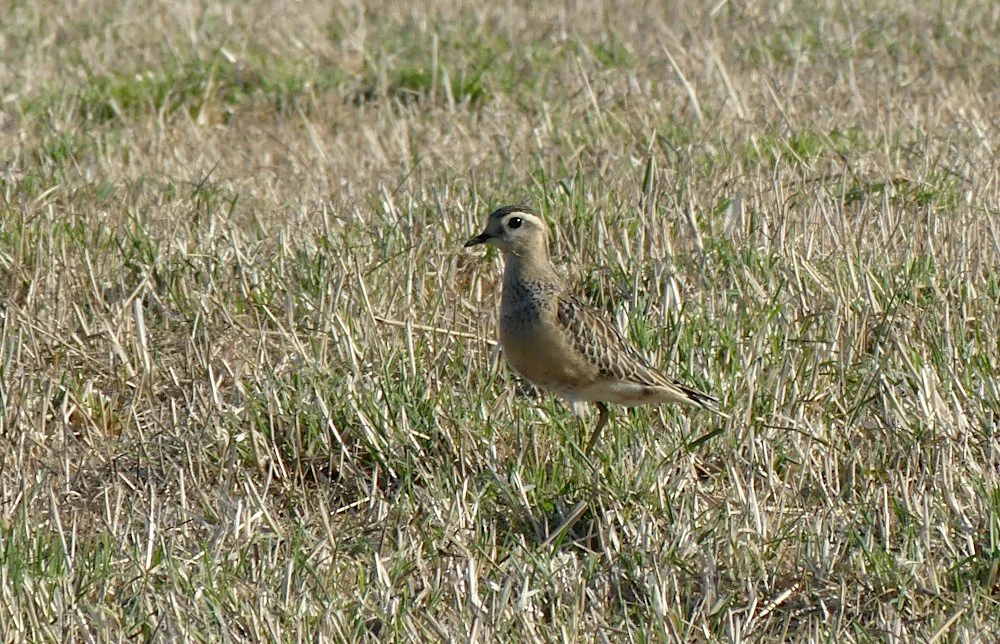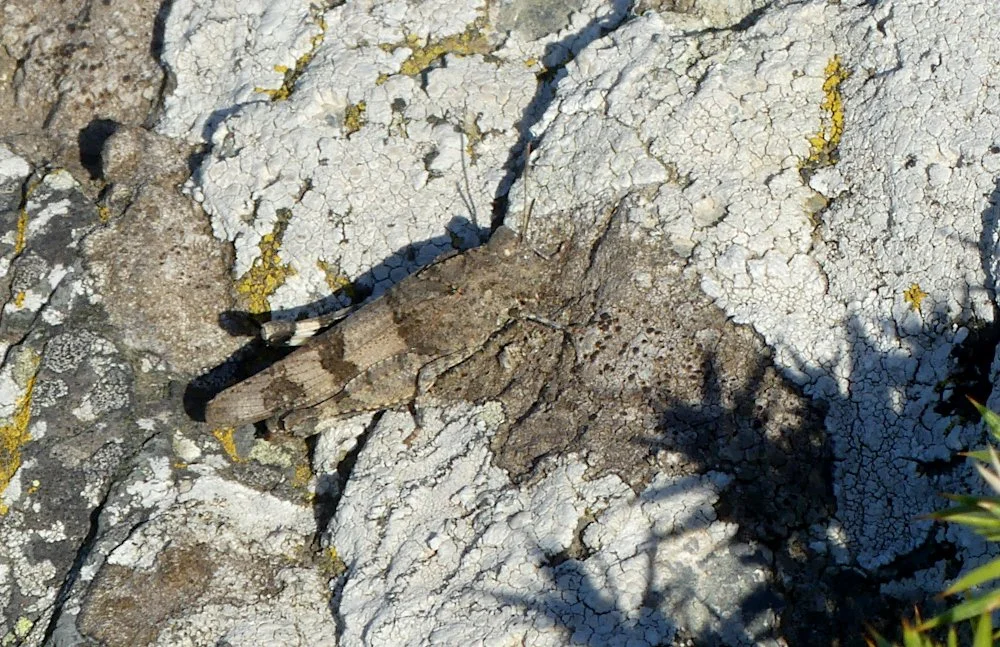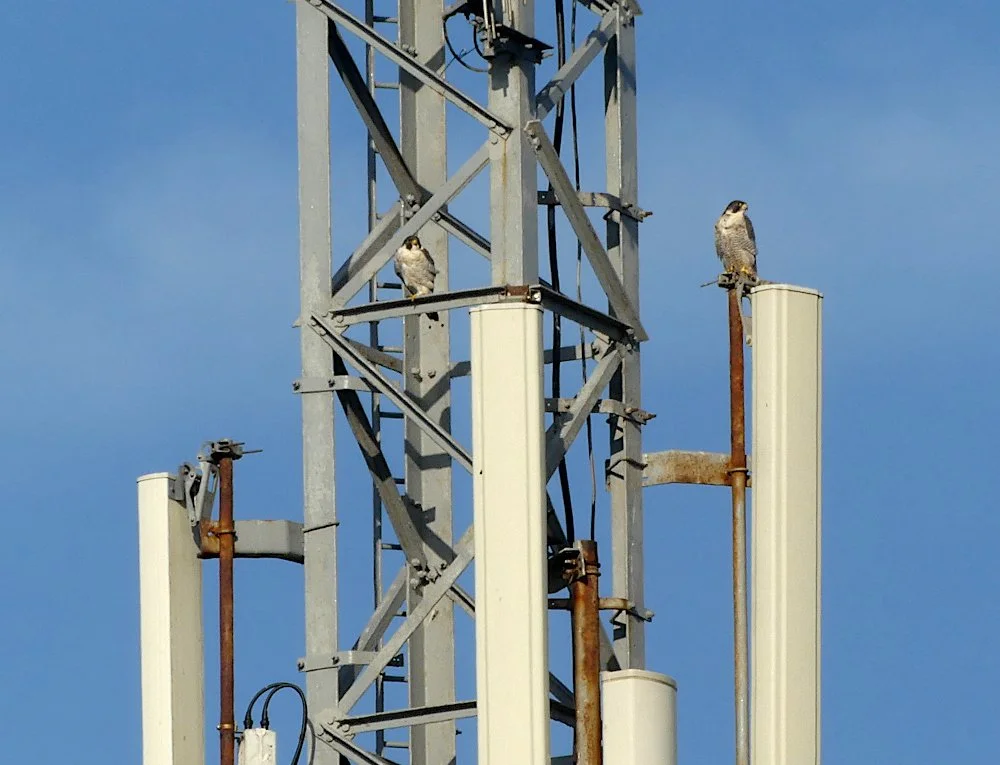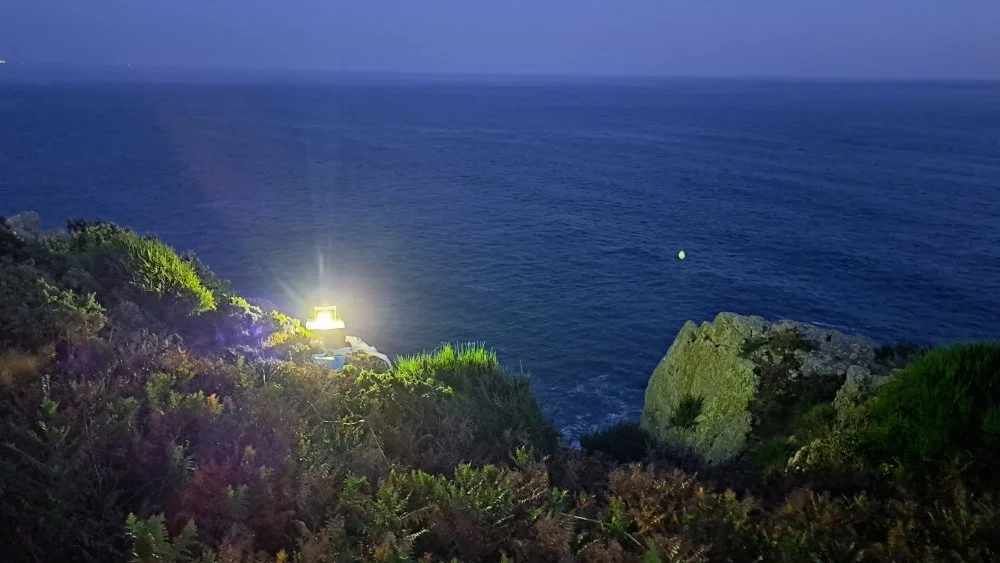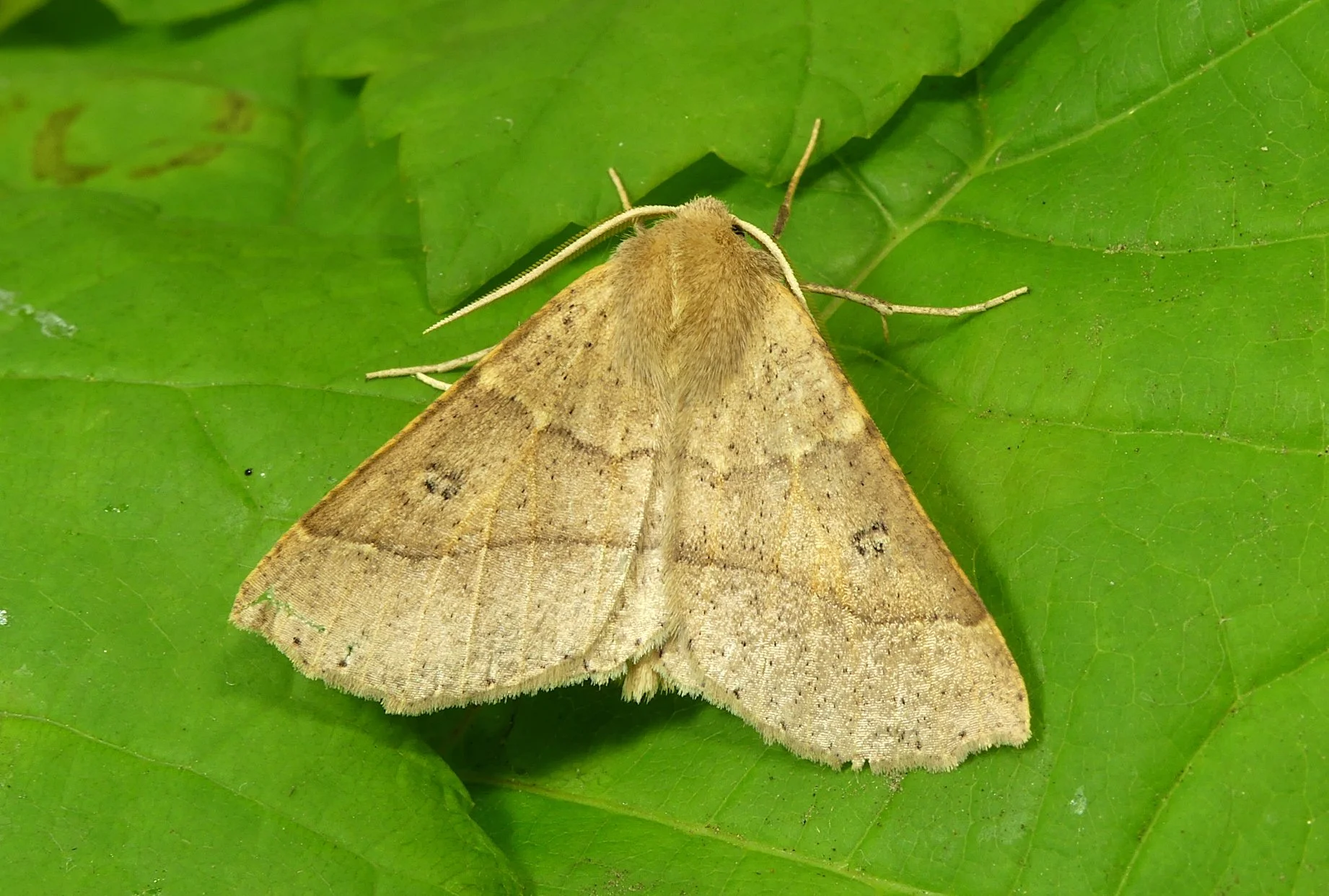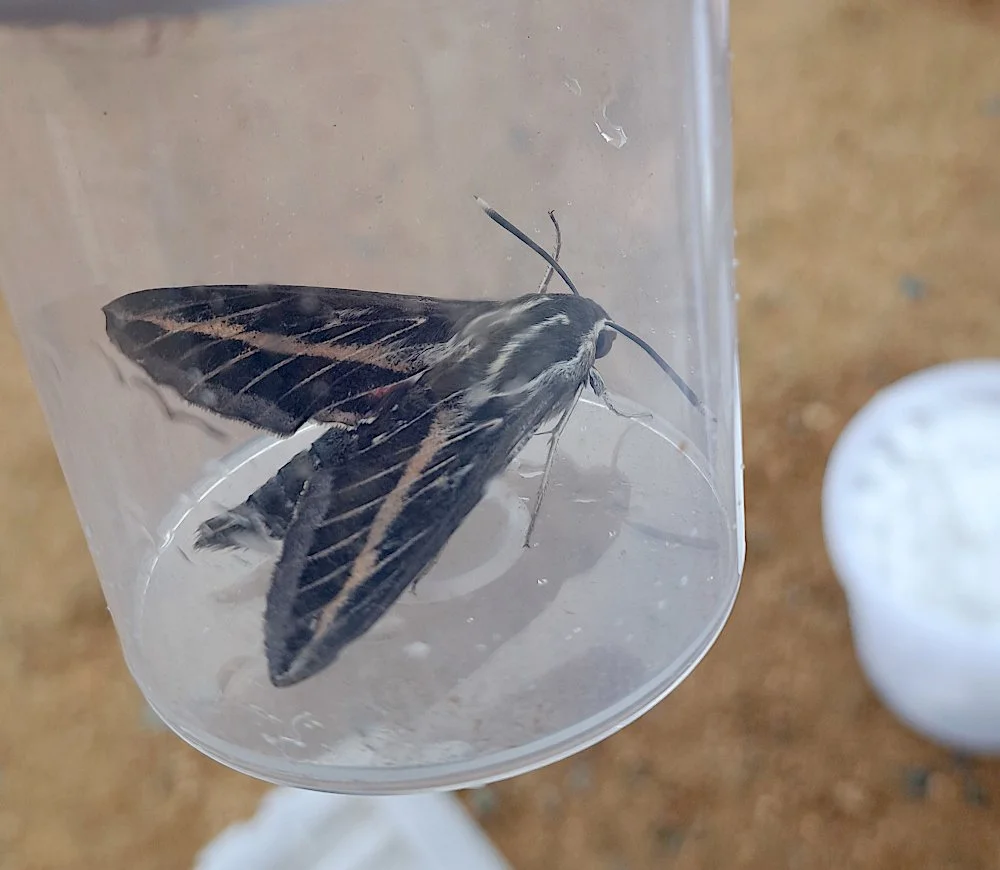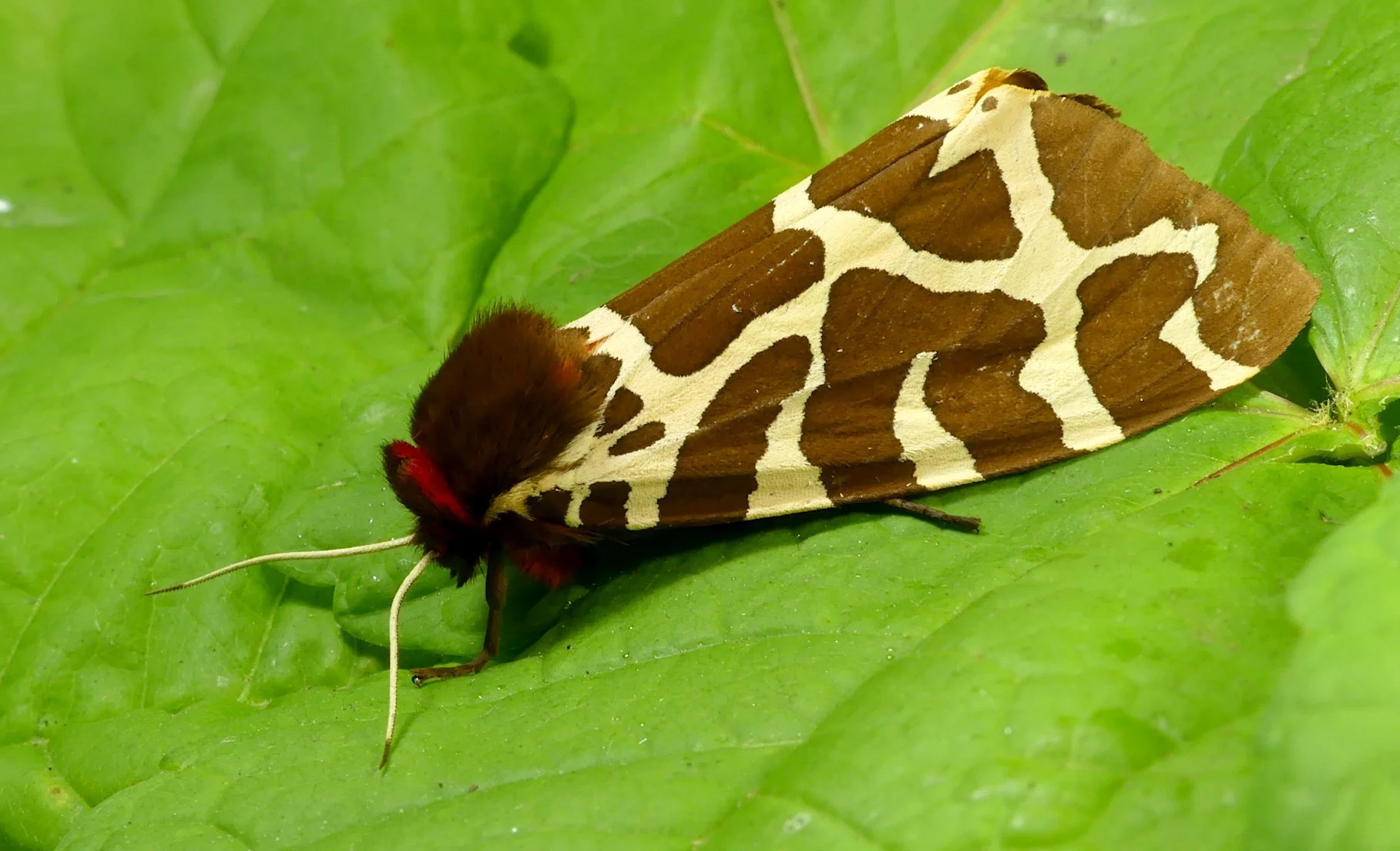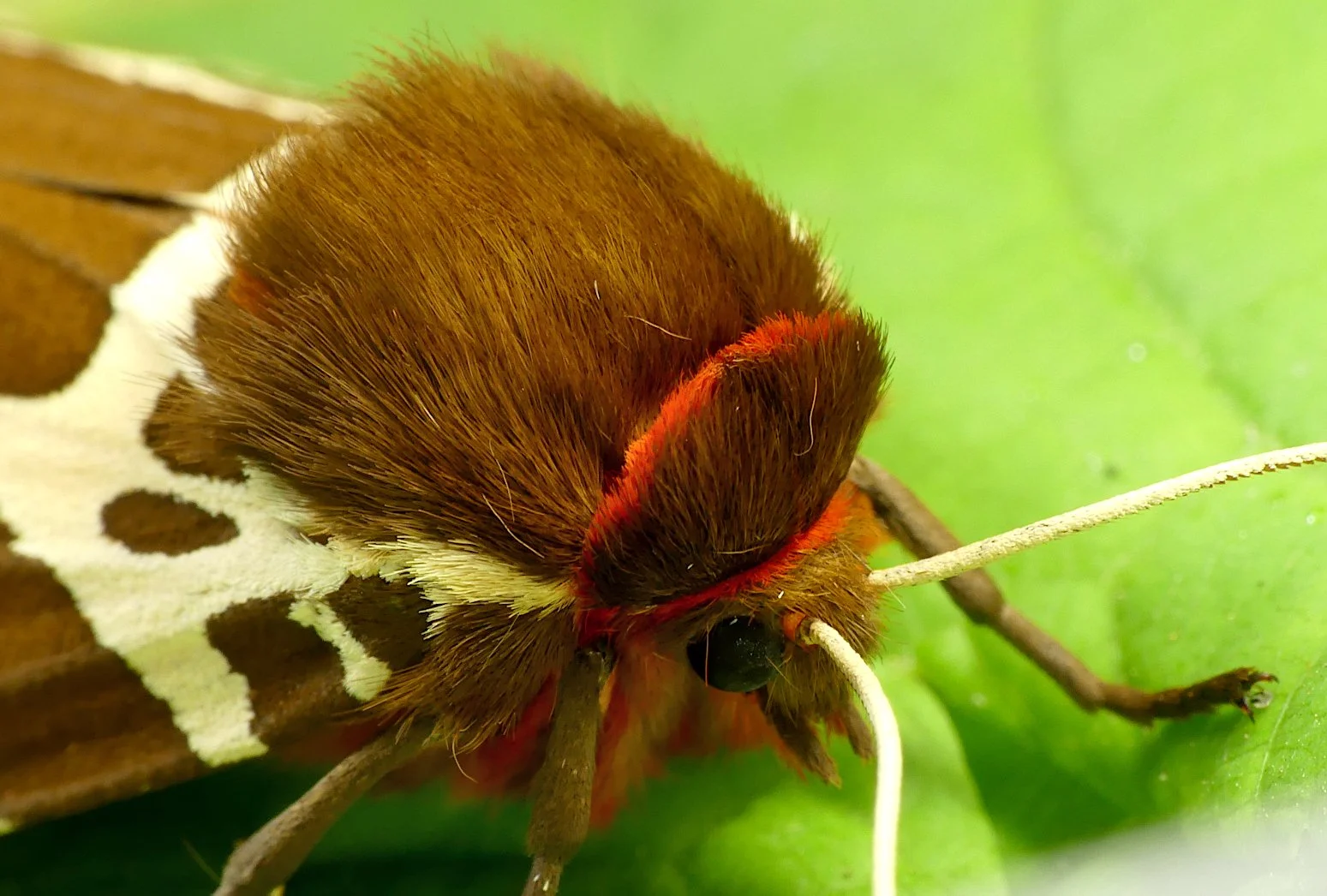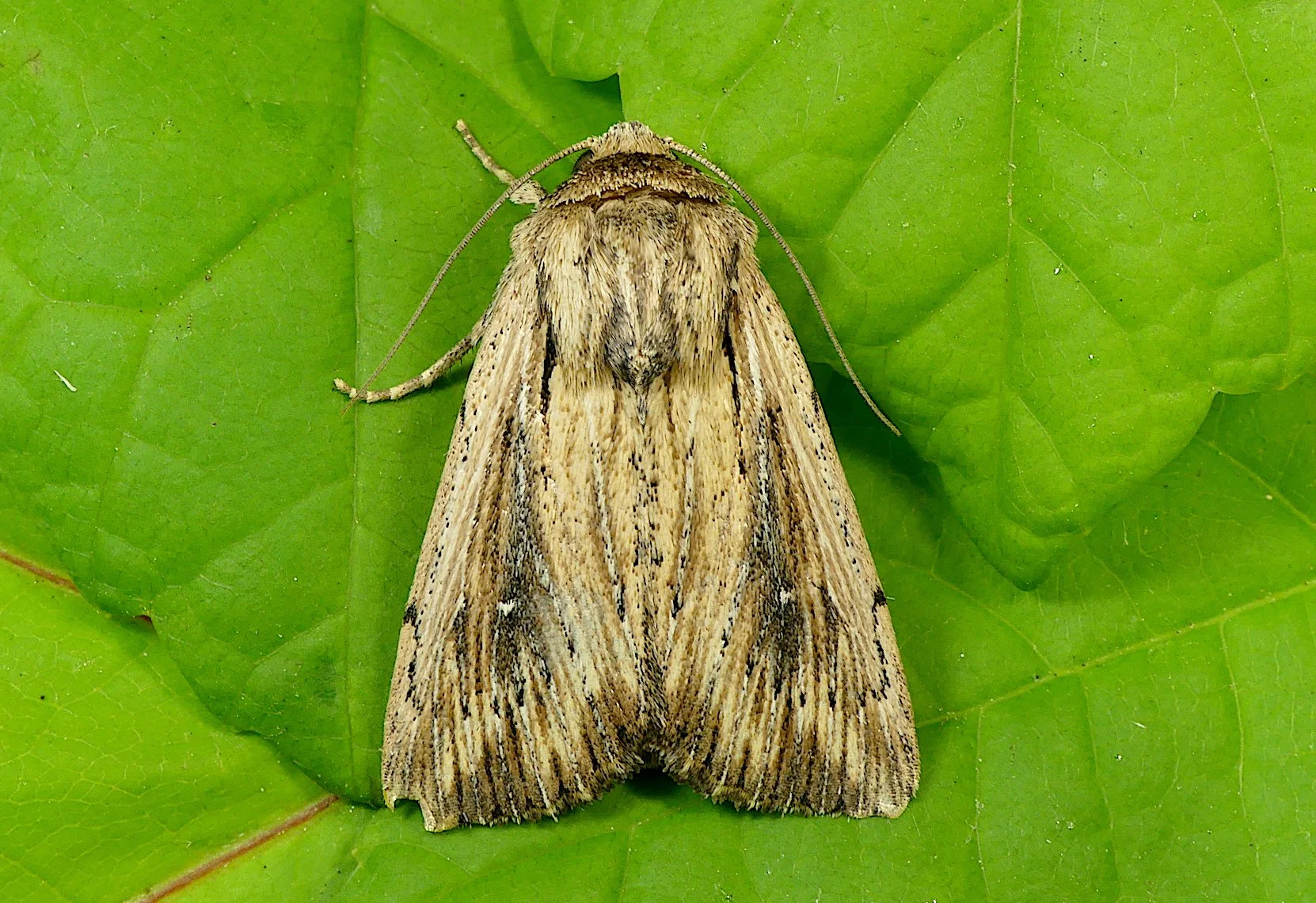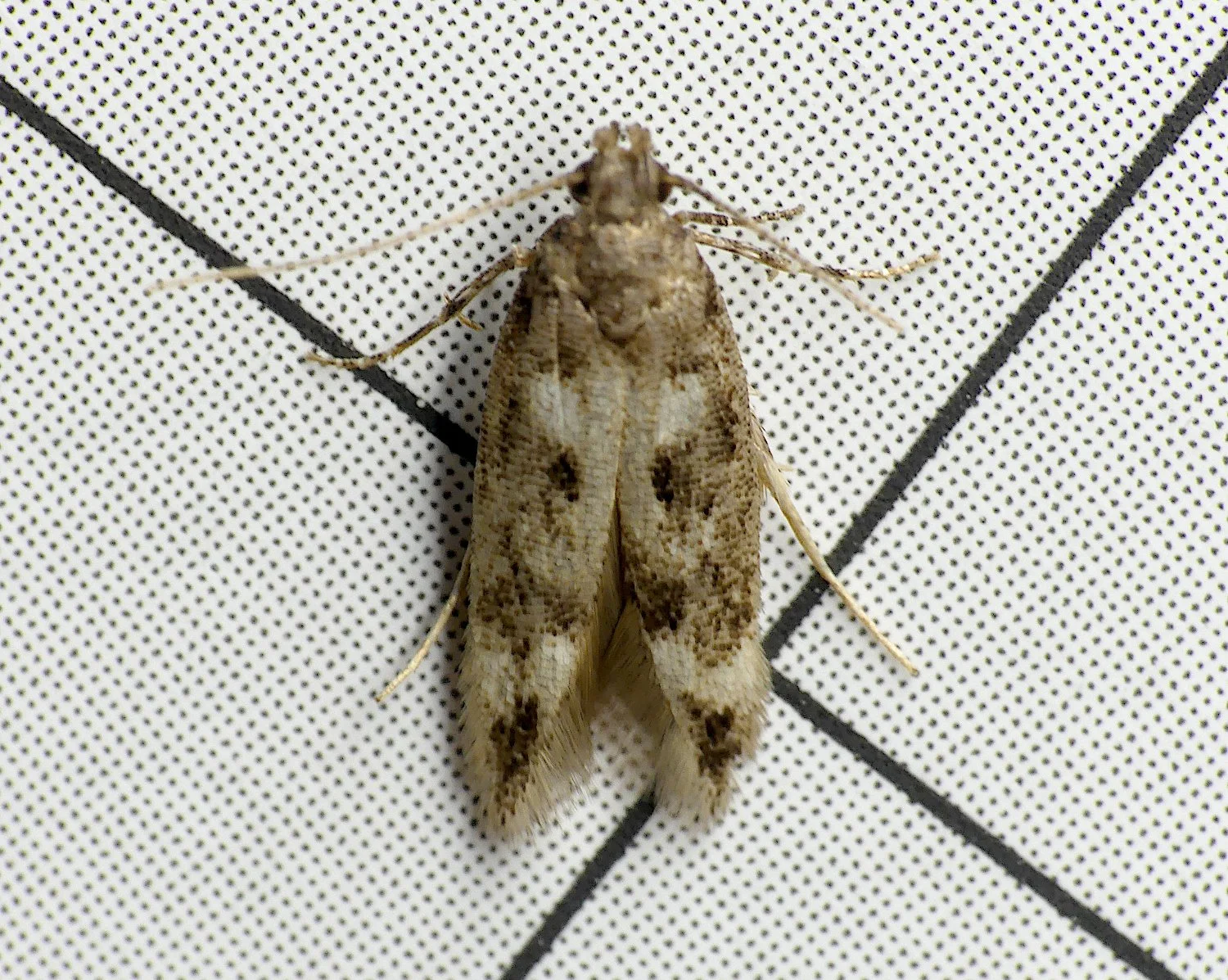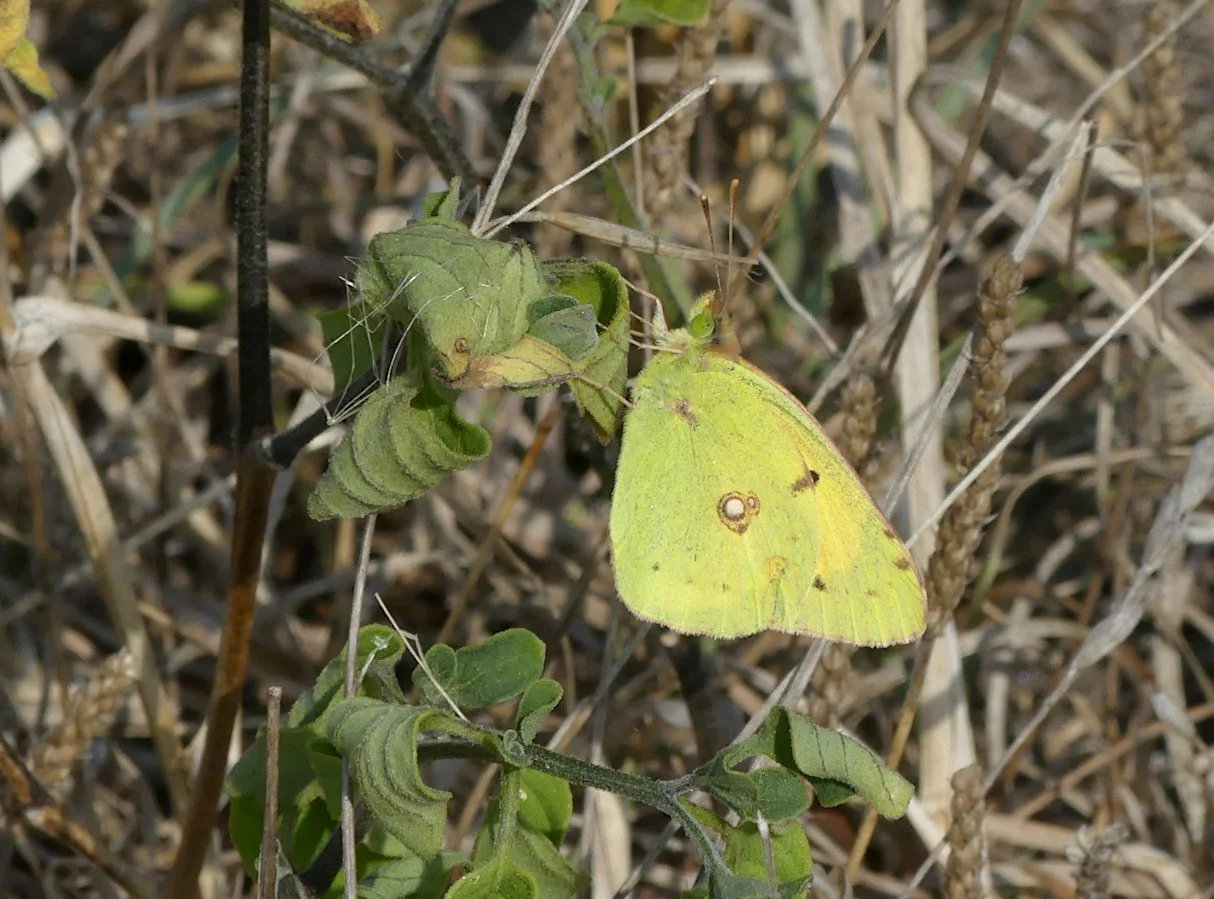August 2025
/Pine-tree Lappet - garden, 12 Aug 25
With a full month at home in August, moth-trapping was the focus of attention, but there was not a great number of weather-suitable nights to get the light out in the garden. However, mid-month, between 11th and 15th, conditions were perfect - warm overnight and little wind - and I had seven new species for the garden in just four nights, including my 900th moth species in the UK & CI.
The 11th started off with 92 species and there were signs of migration with Cydia amplana, 10 Rush Veneers, 4 Palpita vitrealis, Small Mottled Willow, Bordered Straw, as well as a rarely-seen Lesser-spotted Pinion. I also pulled out a ‘red underwing’ type which was clearly different than the Rosy Underwings that I had seen earlier in the week, being smaller, darker, and with golden speckles on the forewing. It turned out to be a Light Crimson Underwing, a new species for me and only a recent visitor to Guernsey. Another odd moth, totally battered and bald, emerged from a crevice in the trap and I worked out that it was an Oak Processionary, another new species for the garden. That’s both processionaries new in 2025, although I had seen one of these before about 20-odd years ago in my old garden.
Light Crimson Underwing - garden, 11 Aug 25
The 12th August had similar numbers of moths but less migrants, but did include a few oddities such as a Wax Moth and Golden Twin-spot. A tiny, orange creature was barely visible on one of the trays and turned out to be a new species for Guernsey - Tischeria ekebladella. It is a common species on oaks in the UK and is quite likely to be common here in Guernsey, just under-recorded.
Tischeria ekebladella - Garden, 12 Aug 25
I don’t usually do three nights in a row in the garden, but in times of plenty, why not dig in? I am glad I did decide to, because that night I managed a magnificent three new macros for the garden. The highlight being a species I had been after for a long time, a Pine-tree Lappet (see pic at top of page). It’s a species where you look in the book and think I’d love to see that, and I knew I would do eventually judging from a number of local records in recent years. It may be a species which is colonising from the continent. The second new species was just I was packing everything up and I noticed a hook-tip on the back of the sheet, which I initially passed off as a Pebble but luckily, I caught it and found it was a Dusky Hook-tip - an absolute corker and just the third for Guernsey. The third was Clay Triple-lines, a species I had suspected in the past but I did find an indisputable one today.
Dusky Hook-tip - Garden, 13 Aug 25
The 15th was also great and the new species this night was Toadflax Pearl (Antigasta catalaunalis) a migrant which I had been looking out for in recent years. Other good species were only my second Lesser Cream Wave, a Scarce Bordered Straw, a Jersey Mocha and 2 Flame Carpets. Conditions were less suitable for the rest of the month and, although I trapped some fine species, it was slim-pickings compared to this golden week of moths.
With the summer holidays underway, getting out and doing some fieldwork was a priority and some great species were found. On a short walk round Bordeaux on 16th, I had a random bash at a Broom bush (as you do) and a tiny moth fell out onto the net. It was a Phyllonorycter which looked a little odd and so I potted it up. It revealed itself to be a new species for Guernsey, Phyllonorycter scopariella. This is a Broom specialist and is apparently very rarely seen or even recorded, as it mines the stems of Broom which are difficult to notice in the field, and the adults seem to just hide in the middle of Broom bushes, only seen when you bash the bush! They are probably quite common here really.
Phyllonorycter scopariella - Bordeaux, 16 Aug 25
A highlight of a potter round Jaonneuse headland on 18th August was great views of a tiny Greater White-toothed Shrew feeding along the pathside, a common species here but never hardly seen long enough to study. Of course, a small mammal showing itself so boldly often means it might be a bit desperate, but it seemed healthy enough as it scampered round the sand.
Greater White-toothed shrew - Jaonneuse, 18 Aug 25
Greater White-toothed shrew - Jaonneuse, 18 Aug 25
With insects so much to the fore, birding took a bit of a back seat in August, but with a south-easterly overnight, I decided to give Pleinmont a go to search for some drift migrants arriving from France. In the end there was not a huge number of birds on the headland. However, as I was nearing the observation tower, I heard a weird, unfamiliar call, somewhat reminding me of a Snipe. Luckily, I saw the bird in question straight away as it appeared to come in off the sea from the direction of the Hanois. As I watched it fly past I could see that it was a plover, seemingly quite dark with no white areas, apart from a very distinct supercilium. It was clearly a Dotterel, a pretty good find and a totally unexpected one. I had my sound recorder on and so I managed to record the call as it went past.
The bird did not stop though and seemed to go right through. I wondered however that it may decide to stop in the larger, open fields at Mont Herault just to the East, so returned to the car to re-park and check those fields. There were a few more migrants here than there was at Pleinmont, with about 5 Whinchat and 7 Yellow Wagtails feeding in the sun. As I approached the large field, I was pleased to see that my prediction was correct, and the Dotterel was trotting round the cropped slope. It was, as I suspected, a fine juvenile bird, with a peachy belly and a ghost of a necklace. It showed pretty well in the sunshine and stayed in the area for a week. A Golden Plover appeared overhead and a few of these were to join the Dotterel during the next few days. This is the first Dotterel I have found in Guernsey, so I was very pleased indeed.
Dotterel - Mont Herault, 24 Aug 25
Dotterel - Mont Herault, 24 Aug 25
Blue-winged Grasshopper - Pleinmont, 24 Aug 25 - seems to be a good year for this species - 3 were seen this morning
Peregrines - Pleinmont, 24 Aug 25
The local entomologists are trying to do more moth-trapping out in the field rather than everyone sticking to their own gardens, to try to get a wider picture of the species present. With good-looking winds from the south, Andy M brought the generator to the cliffs at Corbiere on 25th August and we set up a few traps on the edge hoping for some special species.
Moth trap set up on the cliffs at Corbiere
The wetness in the morning arrived a little bit sooner than we hoped so we collected up the traps in pretty slippery conditions which could have been disastrous! However, it was totally worth it as we had some superb species, including another one of my most-wanted species - “dardoinaria”, a.k.a. the Dusky Scalloped Oak. This was discovered in Guernsey in the 90’s but has never expanded in distribution, stubbornly clinging only to the broom bushes on the southern cliffs, never ever wandering north into gardens. A legendary species here and one I have finally ticked off.
Dusky Scalloped Oak - Corbiere, 25 Aug 25
Top of the bill of the other species recorded was Striped Hawk-moth - when you see them you forget how small they are. However, an Annulet was much rarer from a local perspective, another species which seems restricted to the cliffs and so is hardly ever seen. I saw one many years ago when we used to put the light out at Petit Bot, but never since. A cracking Garden Tiger roared out of the trap and a tiny new species for me was Caryocolum vicinella. Trapping on the cliffs is the best thing to do on Guernsey but you can’t just pop out and do it, as it takes a bit of organising.
A saw a total of 8 new moths in the month of August, which is not bad to say I’ve been looking for them for over 25 years. Getting to 900 species of Lepidoptera was a superb landmark to hit, but is 1000 species too far away to be likely? I suppose getting to a few different habitats in the UK will be helpful but with 12 new species for the garden already this year, I may just be able to do it just in Guernsey.
Striped Hawk-moth - Corbiere, 25 Aug 25
Annulet - Corbiere, 25 Aug 25
Garden Tiger - Corbiere, 25 Aug 25
Garden Tiger - Corbiere, 25 Aug 25
Devonshire Wainscot - Corbiere, 25 Aug 25 - one of the most common species on the cliffs, but rare in the garden
Caryocolum vicinella - Corbiere, 25 Aug 25
Holly Blue larva - 14 Aug 25
Clouded Yellow - Rousse, 15 Aug 25

